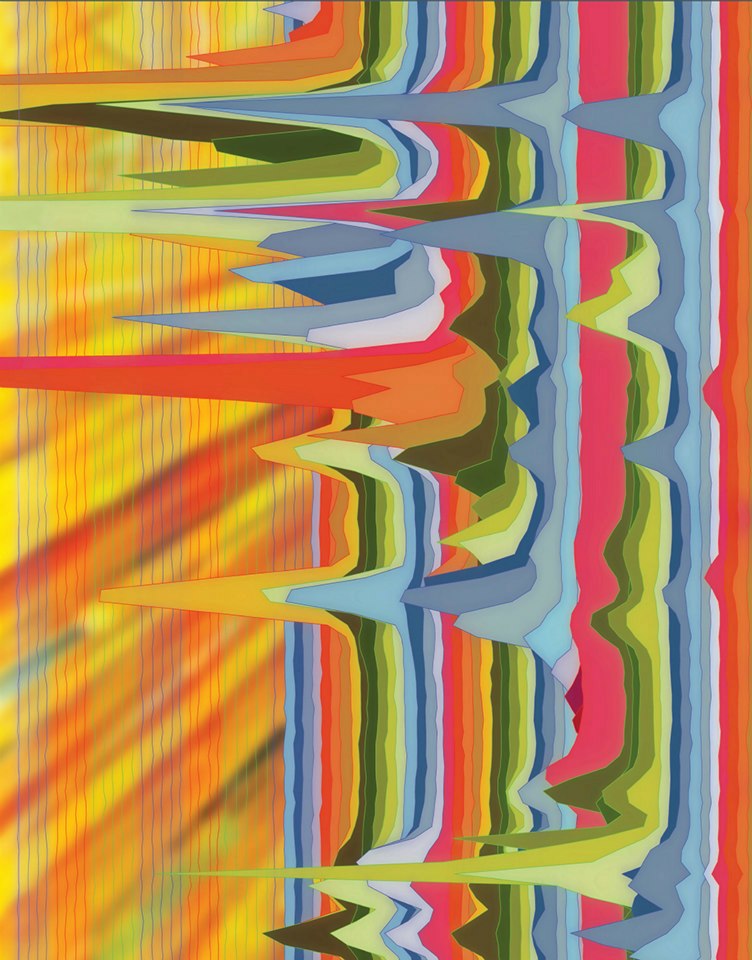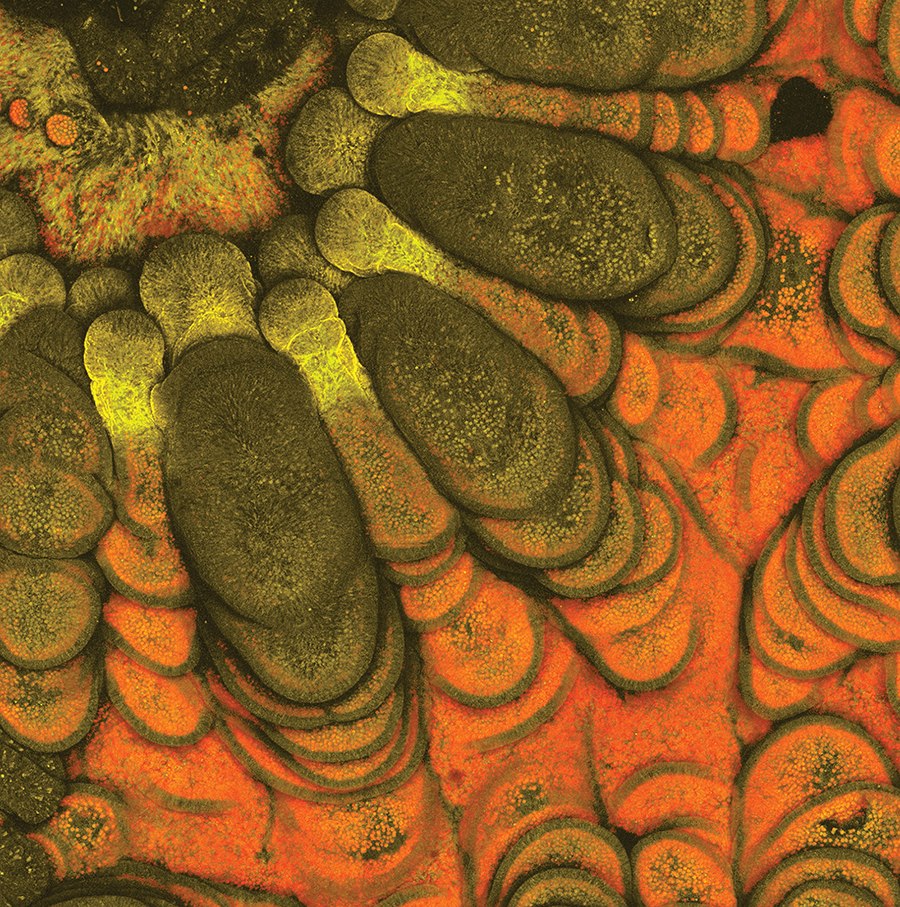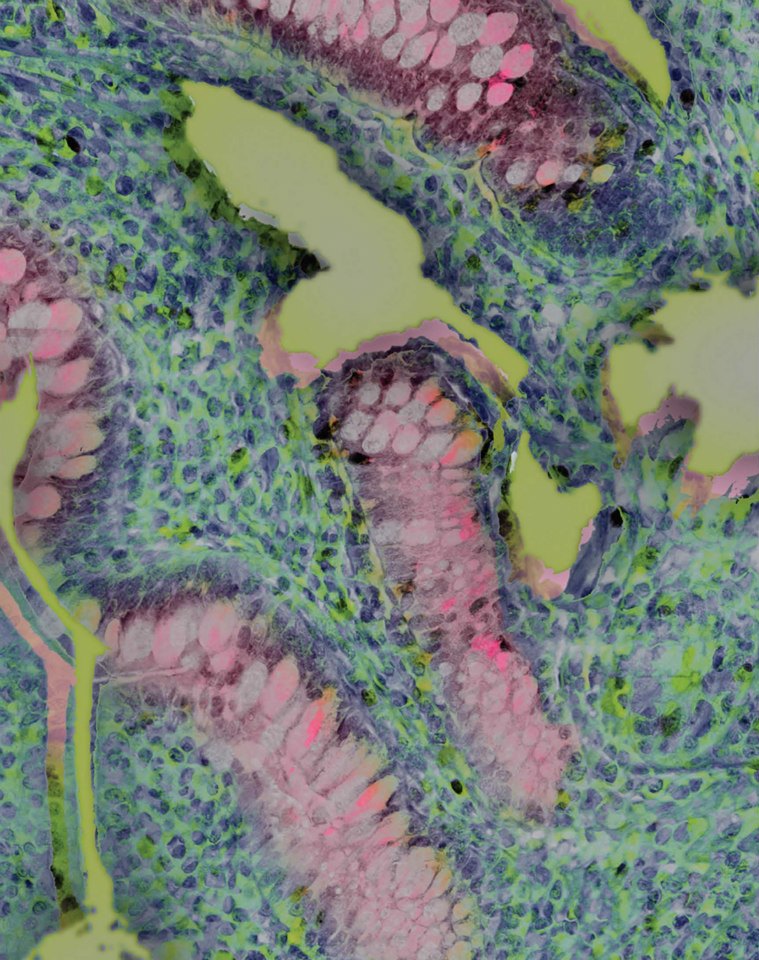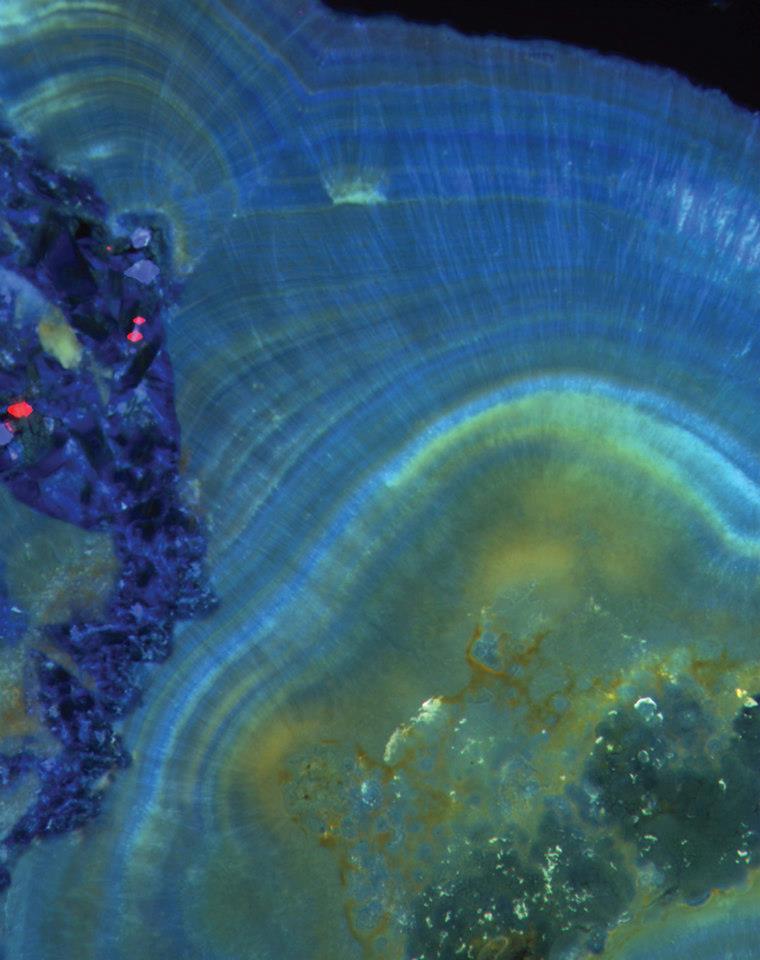Bio-bot on the move
Scientist Collaborator
Vincent Chan
Rashid Bashir Lab
Instrument
Canon EOS 5D Mark II Digital SLR Camera
Funding Agency
Research funded by the National Science Foundation
Original Imaging



Special Thanks
Proton Minuet
Scientist Collaborator
Yunzi Luo
Huimin Zhao Lab
Instrument
Agilent 600 MHz NMR
Funding Agency
Research funded by National Academies Keck Futures Initiative on Synthetic Biology
Original Imaging



Special Thanks
Coral communities
Scientist Collaborator
Carly Hill Miller
Mayandi Sivaguru
Glenn Fried
Bruce Fouke
Bruce Fouke Lab
Instrument
Zeiss LSM 710 two photon microscope
Funding Agency
Research funded by the Office of Naval Research
Original Imaging



Special Thanks
World in a grain
Scientist Collaborator
Luke Mander
Surangi Punyasena Lab
Instrument
Zeiss Apotome, Zeiss LSM 710 NLO
Funding Agency
Research funded by the National Science Foundation
Original Imaging



Special Thanks
Rivers of life
Scientist Collaborator
Sinan Arslan
Taekjip Ha Lab
Instrument
Asylum Cypher High Resolution AFM
Funding Agency
Research funded by the National Institutes of Health, the National Science Foundation, and the Howard Hughes Medical Institute
Original Imaging



Special Thanks
Powerhouses of the cell
Scientist Collaborator
Vladimir Kolossov
Rex Gaskins Lab
Instrument
ELYRA superresolution microscope
Funding Agency
Research funded by National Institutes of Health
Original Imaging



Special Thanks
Nursery colors
Scientist Collaborator
Tim Abbott
Manabu Nakamura Lab
Instrument
Zeiss LSM 700 Confocal Microscope
Funding Agency
Research funded by Martek Biosciences Inc. and the United States Department of Agriculture
Original Imaging



Special Thanks
Zeiss Elyra
Scientist Collaborator
Tim Abbott
Manabu Nakamura Lab
Instrument
Zeiss Elyra SR-SIM Superresolution system
Funding Agency
Research funded by the Institute for Genomic Biology
Original Imaging



Special Thanks
Growing appetite
Scientist Collaborator
Juan Castro
James Drackley Lab
Instrument
NanoZoomer Slide Scanner
Funding Agency
Research funded by Milk Specialties Global
Original Imaging



Special Thanks
Invasion’s forefront
Scientist Collaborator
John Paul Eichorst
Robert Clegg
Glenn Fried
Yingxiao Wang
Robert Clegg Lab
Instrument
Multiphoton Confocal Microscope Zeiss 710 with Mai Tai eHP Ti: sapphire laser and Imaris
Funding Agency
Research funded by National Institutes of Health
Original Imaging



Special Thanks
Through a mathematical lens
Scientist Collaborator
Mayandi Sivaguru
Core Facilities
Instrument
Zeiss Elyra S1: SR-SIM System
Funding Agency
Research funded by the Institute for Genomic Biology
Original Imaging



Special Thanks
The finer point
Scientist Collaborator
James Zhu
Shiv Gopal Kapoor
Shiv Gopal Kapoor Lab and Chao-Trigger Machine Tool Systems Lab
Instrument
Zeiss LSM 700 Confocal Microscope
Funding Agency
Research funded by the Grayce Wicall Gauthier Chair in the UIUC MechSE department
Original Imaging



Special Thanks
Food for thought
Scientist Collaborator
Matthew Conrad
Rodney Johnson Lab
Instrument
Zeiss LSM 700 Confocal - four laser point scanning confocal with a single pinhole
Funding Agency
Research funded by the National Institutes of Health and the United States Department of Agriculture
Original Imaging



Special Thanks
Light of sweetness
Scientist Collaborator
Sarah K. Scholl
Shelly J. Schmidt Lab
Instrument
Fluorescence Microscope - Zeiss Axiovert 200M with the Apotome
Funding Agency
Research funded by various donor funds
Original Imaging



Special Thanks
Gaining strength
Scientist Collaborator
Vincent Chan
Rashid Bashir Lab
Laboratory of Integrated Biomedical Micro/Nanotechnology & Applications
Instrument
Multiphoton Confocal Microscope Zeiss 710 with Mai Tai eHP Ti: sapphire laser
Funding Agency
Research funded by the National Science Foundation
Original Imaging



Special Thanks
Cosmic kidney stones
Scientist Collaborator
Jim Bruce
Joe Weber
Sheila Egan
Yiran Dong
Bruce Fouke
Bruce Fouke Lab
Instrument
Microscope Zeiss Axiozoom V16 Scope
Funding Agency
Research funded by the National Science Foundation
Original Imaging



Special Thanks
Inner Light
Scientist Collaborator
Mayandi Sivaguru
Core Facilities
Instrument
Zeiss LSM 710 Two photon Microscope
Funding Agency
Research funded by Novus International Inc.
Original Imaging



Special Thanks
Cellular frontier
Scientist Collaborator
Mayandi Sivaguru
Core Facilities
Instrument
Zeiss Elyra Structured Illumination Superresolution System
Funding Agency
Research funded by the Institute for Genomic Biology
Original Imaging



Special Thanks
Go with the flow
Scientist Collaborator
Jose Solbiati
John Gerlt Lab
Enzyme Function Initiative
Instrument
Canon EOS 5D Mark II Digital SLR Camera
Funding Agency
Research funded by National Institutes of Health
Original Imaging



Special Thanks




























